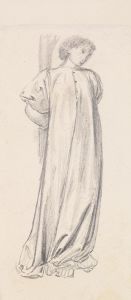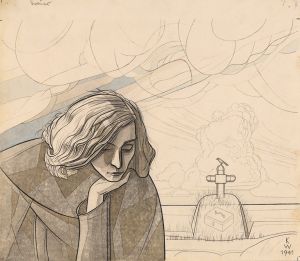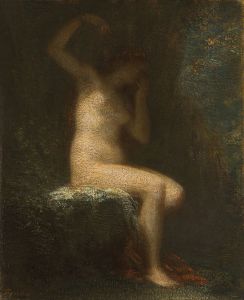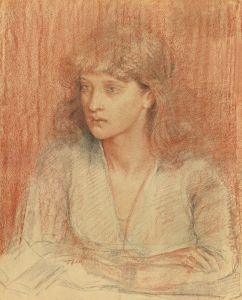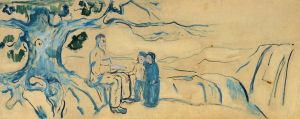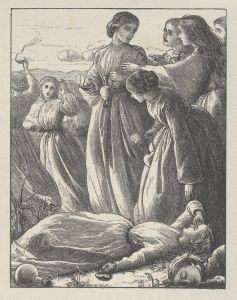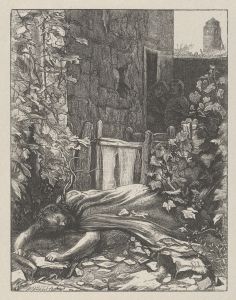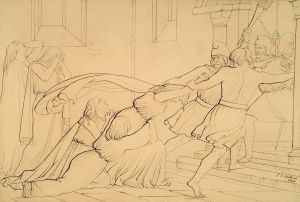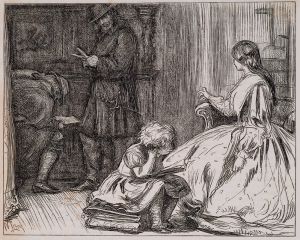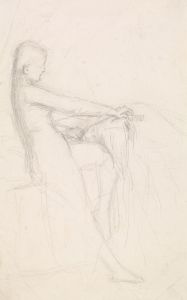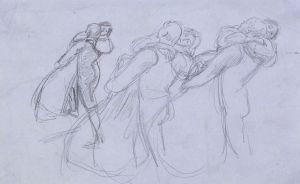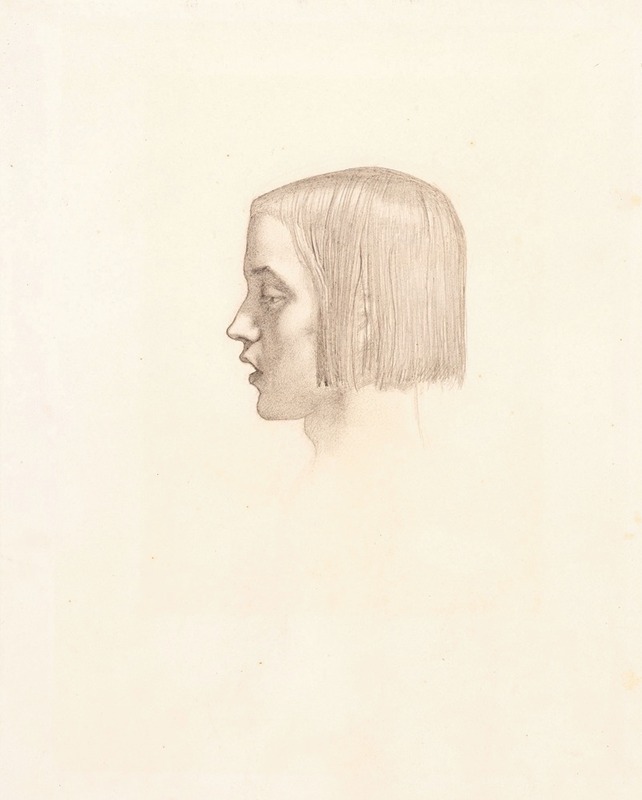
Isabella – Head study of the Youth
A hand-painted replica of Sir John Everett Millais’s masterpiece Isabella – Head study of the Youth, meticulously crafted by professional artists to capture the true essence of the original. Each piece is created with museum-quality canvas and rare mineral pigments, carefully painted by experienced artists with delicate brushstrokes and rich, layered colors to perfectly recreate the texture of the original artwork. Unlike machine-printed reproductions, this hand-painted version brings the painting to life, infused with the artist’s emotions and skill in every stroke. Whether for personal collection or home decoration, it instantly elevates the artistic atmosphere of any space.
Sir John Everett Millais, a prominent figure in the Pre-Raphaelite Brotherhood, created the artwork "Isabella – Head study of the Youth" as part of his exploration of themes from literature and history. Millais, born in 1829 in Southampton, England, was a child prodigy who became the youngest student to enter the Royal Academy Schools at the age of 11. His work is characterized by its attention to detail, vibrant colors, and a focus on realism, which were hallmarks of the Pre-Raphaelite movement.
The painting "Isabella – Head study of the Youth" is a preparatory study for Millais's larger work titled "Isabella," completed in 1849. The larger painting is based on a narrative poem by John Keats, "Isabella, or the Pot of Basil," which itself is derived from a tale in Giovanni Boccaccio's "The Decameron." The story revolves around Isabella, a young woman from a wealthy family, who falls in love with Lorenzo, a man of lower social standing. Her brothers, disapproving of the match, murder Lorenzo. Isabella discovers the crime and retrieves Lorenzo's head, which she buries in a pot of basil that she tends to obsessively.
In "Isabella – Head study of the Youth," Millais focuses on capturing the youthful features and emotional depth of one of the characters from the larger narrative. This study likely served as a way for Millais to experiment with expressions and refine his technique before committing to the final composition. The attention to detail in the study reflects Millais's dedication to realism and his ability to convey complex emotions through portraiture.
Millais's work on "Isabella" and its studies marked a significant moment in his career, as it was one of the first major works he produced as a member of the Pre-Raphaelite Brotherhood. This group, founded in 1848 by Millais, William Holman Hunt, and Dante Gabriel Rossetti, sought to reject the academic standards of the time and return to the detail, vivid colors, and complex compositions of early Renaissance art. The Brotherhood's influence is evident in Millais's meticulous approach to "Isabella – Head study of the Youth."
The study, like many of Millais's works, demonstrates his skill in capturing the subtleties of human expression and his commitment to the ideals of the Pre-Raphaelite movement. It also highlights his interest in literary subjects, a common theme among Pre-Raphaelite artists who often drew inspiration from poetry, mythology, and medieval tales.
While the specific details of the study's creation, such as the exact date and the identity of the model, are not well-documented, its connection to the larger "Isabella" painting provides context for its significance in Millais's oeuvre. The study remains an example of Millais's early work and his contribution to the Pre-Raphaelite Brotherhood's legacy in the art world.
Overall, "Isabella – Head study of the Youth" exemplifies Millais's artistic vision and his role in shaping 19th-century British art. Through his detailed and emotive studies, Millais not only contributed to the narrative depth of his larger works but also left a lasting impact on the portrayal of literary themes in visual art.





